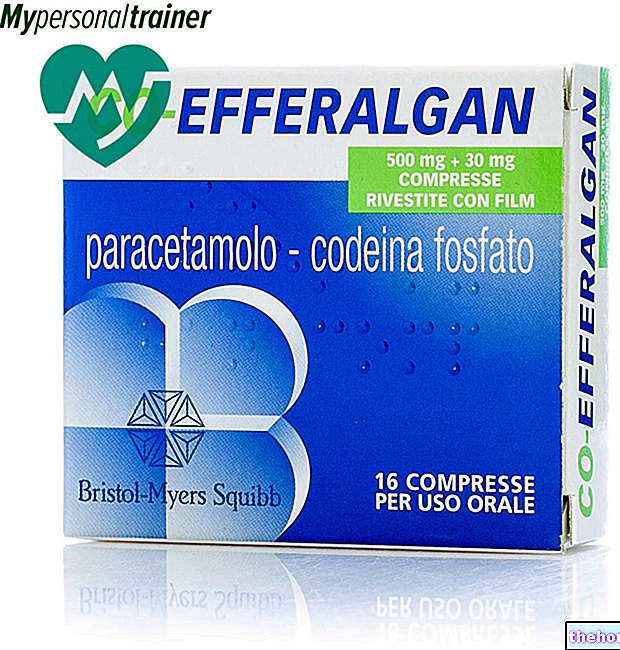Active ingredients: Vitamins
IDROPLURIVIT® oral drops, solution
IDROPLURIVIT® coated tablets
Indications Why is Idroplurivit used? What is it for?
PHARMACOTHERAPEUTIC CATEGORY
Multi-vitamin.
THERAPEUTIC INDICATIONS
Prophylaxis and therapy of multiple vitamin deficiencies.
Contraindications When Idroplurivit should not be used
Hypersensitivity to the components of the product.
Precautions for use What you need to know before taking Idroplurivit
The coated tablets contain sucrose: this should be taken into account in diabetic patients and in patients who follow low-calorie diets.
Interactions Which drugs or foods can modify the effect of Idroplurivit
Of note only, for vitamin E, the possible enhancement of the action of digitalis and insulin (the doses of which will therefore have to be reduced if necessary); for vitamin B6 the antagonism towards the activity of levodopa.
Warnings It is important to know that:
After a short period of treatment without appreciable results, consult your doctor. Due to the presence of vitamin B2, the urine can take on a yellow color.
In multi-year therapies, do not exceed the number and duration of the therapeutic cycles recommended for each year, in order to avoid the risk of chronic overdosing of vitamins A and D3. In particular: very high doses of vitamin A in animals are teratogenic and have been associated in isolated cases with malformations in humans.
Daily amounts of vitamin A higher than 10,000 I.U. they should be avoided during pregnancy (especially in the first months) and you should consult your doctor for advice on the total amount of vitamin A that can be taken through the different sources.
It is good that the product is kept out of the reach of children (dangers of acute overdosing of vitamins A and D3).
Dose, Method and Time of Administration How to use Idroplurivit: Posology
Oral drops, solution: infants: 15 drops per day; children: 30 drops per day; adults: 40 drops per day.
Coated tablets: 2 or more tablets per day.
N.B .: 40 drops (approximately 1 mL) have the same active ingredient content as 1 tablet.
Idroplurivit Gocce has a pleasant taste and can be easily administered, especially in the pediatric field, dissolved in water, milk, fruit juices, etc.
Do not exceed the recommended dose.
Overdose What to do if you have taken an overdose of Hydroplurivit
No cases of overdosing of Idroplurivit have been described. On the other hand, cases of overdose of vitamin A have been described: acute (intracranial hypertension with consequent headache, nausea, vomiting, drowsiness, irritability; hepatomegaly; itching and skin flaking), the symptoms of which disappear within 72 hours of discontinuing the intake; chronic ( skin peeling, alopecia, labial fissures, osteo-articular pain, headache, irritability, asthenia, anorexia), the symptoms of which tend to regress more or less gradually with the suspension of the intake.Cases of overdosage have also been described for vitamin D3 which essentially translate into hypercalcemia and related signs and symptoms.
For the other vitamins contained in Idroplurivit there does not seem to be any overdose problems.
Side Effects What are the side effects of Idroplurivit
There are no known undesirable effects attributable to the components of Idroplurivit.
Report to your doctor or pharmacist any undesirable effects that may occur.
Expiry and Retention
No special storage precautions.
Warning: do not use the medicine after the expiry date shown on the package.
Composition and pharmaceutical form
COMPOSITION
Oral drops, solution
One 10 mL bottle contains:
Active ingredients: retinol esters (vitamin A) 83,300 IU, cholecalciferol (vitamin D3) 16,600 IU, dl-α-tocopheryl acetate (vitamin E) 16,0 mg, thiamine hydrochloride (vitamin B1) 16,0 mg, riboflavin (ester 5 "-monophosphoric sodium salt) (vitamin B2) 16.0 mg, pyridoxine hydrochloride (vitamin B6) 8.0 mg, nicotinamide (vitamin PP) 160.0 mg, ascorbic acid (vitamin C) 500.0 mg, sodium pantothenate ( vitamin B5) 16.0 mg.
Excipients: polysorbate 80, dibasic sodium phosphate, 70% sorbitol, propylene glycol, edetic acid, butylhydroxyanisole, methyl p-hydroxybenzoate, sodium bicarbonate, citric acid, cedar essential oil, sweet orange essential oil, purified water.
Coated tablets
Each tablet contains:
Active ingredients: retinol esters (vitamin A) 8,330 IU, cholecalciferol (vitamin D3) 1,660 IU, dl-α-tocopheryl acetate (vitamin E) 1.6 mg, thiamine nitrate (vitamin B1) 1.6 mg, riboflavin (vitamin B2 ) 1.6 mg, pyridoxine hydrochloride (vitamin B6) 0.8 mg, nicotinamide (vitamin PP) 16.0 mg, ascorbic acid (vitamin C) 50.0 mg, calcium pantothenate (vitamin B5) 1.6 mg.
Excipients: mannite, rice starch, microcrystalline cellulose, lactose, magnesium stearate, titanium dioxide, polyvinylpyrrolidone, gum benzoe, precipitated silica, talc, gum arabic, gelatin, carboxymethylcellulose sodium salt, sun orange color E 110, carnauba wax, sucrose.
PHARMACEUTICAL FORM AND CONTENT
Oral drops, solution: 10 mL bottle.
Coated tablets: Blister packs of 40 coated tablets for oral use.
Source Package Leaflet: AIFA (Italian Medicines Agency). Content published in January 2016. The information present may not be up-to-date.
To have access to the most up-to-date version, it is advisable to access the AIFA (Italian Medicines Agency) website. Disclaimer and useful information.
01.0 NAME OF THE MEDICINAL PRODUCT
IDROPLURIVIT
02.0 QUALITATIVE AND QUANTITATIVE COMPOSITION
Idroplurivit Oral drops, solution
One 10 mL bottle contains:
Active principles: retinol esters (vitamin A) 83,300 IU, cholecalciferol (vitamin D3) 16,600 IU, dl-a-tocopheryl acetate (vitamin E) 16,0 mg, thiamine hydrochloride (vitamin B1) 16,0 mg, riboflavin (ester 5 "- monophosphoric sodium salt) (vitamin B2) 16.0 mg, pyridoxine hydrochloride (vitamin B6) 8.0 mg, nicotinamide (vitamin PP) 160.0 mg, ascorbic acid (vitamin C) 500.0 mg, sodium pantothenate (vitamin B5 ) 16.0 mg.
Idroplurivit coated tablets
Each tablet contains:
Active principles: retinol esters (vitamin A) 8,330 IU, cholecalciferol (vitamin D3) 1,660 IU, dl-a-tocopheryl acetate (vitamin E) 1.6 mg, thiamine nitrate (vitamin B1) 1.6 mg, riboflavin (vitamin B2) 1 , 6 mg, pyridoxine hydrochloride (vitamin B6) 0.8 mg, nicotinamide (vitamin PP) 16.0 mg, ascorbic acid (vitamin C) 50.0 mg, calcium pantothenate (vitamin B5) 1.6 mg.
03.0 PHARMACEUTICAL FORM
Oral drops, solution; coated tablets.
04.0 CLINICAL INFORMATION
04.1 Therapeutic indications
Prophylaxis and therapy of multiple vitamin deficiencies.
04.2 Posology and method of administration
Drops: infants 15 drops per day; children 30 drops per day; adults 40 drops per day.
Tablets: 2 or more tablets per day.
N.B .: 40 drops (approximately 1 mL) have the same active ingredient content as 1 tablet.
04.3 Contraindications
Hypersensitivity to the components of the product.
04.4 Special warnings and appropriate precautions for use
Due to the presence of vitamin B2, the urine can take on a yellow color.
In multi-year therapies, do not exceed the number and duration of the therapeutic cycles recommended for each year, in order to avoid the risk of chronic overdosing of vitamins A and D3.
It is good that the product is kept out of the reach of children (dangers of acute overdosing of vitamins A and D3).
The tablets contain sucrose: this should be taken into account in diabetic patients and in patients who follow low-calorie diets.
04.5 Interactions with other medicinal products and other forms of interaction
Of note only, for vitamin E, the possible enhancement of the action of digitalis and insulin (the doses of which will therefore have to be reduced if necessary); for vitamin B6 the antagonism towards the activity of levodopa.
04.6 Pregnancy and lactation
Very high doses of vitamin A in animals are teratogenic and have been associated in isolated cases with malformations in humans. Daily amounts of vitamin A higher than 10,000 IU should be avoided during pregnancy (especially in the first months) and a doctor should be consulted for advice on the total amount of vitamin A that can be taken through the different sources.
04.7 Effects on ability to drive and use machines
No negative effects of the preparation on these activities are reported, nor are they expected.
04.8 Undesirable effects
There are no known side effects attributable to the components of Idroplurivit Drops and tablets.
04.9 Overdose
No cases of overdosing of Idroplurivit have been described. On the other hand, cases of overdose of vitamin A have been described: acute (intracranial hypertension with consequent headache, nausea, vomiting, drowsiness, irritability; hepatomegaly; itching and skin flaking), the symptoms of which disappear within 72 hours of discontinuing the intake; chronic ( skin peeling, alopecia, labial fissures, osteo-articular pain, headache, irritability, asthenia, anorexia), the symptoms of which tend to regress more or less gradually with the suspension of the intake. Cases of overdosage have also been described for vitamin D3 which essentially translate into hypercalcemia and related signs and symptoms.
For the other vitamins contained in Idroplurivit there does not seem to be any overdose problems.
05.0 PHARMACOLOGICAL PROPERTIES
05.1 Pharmacodynamic properties
Vitamin A plays an essential role in retinal function; it is necessary for the normal functions of the epithelial tissue and is required for bone growth, reproductive function and embryonic development. Intestinal absorption is total, but as for all fat-soluble vitamins, it requires the presence of bile; it is stored in the liver where it forms large reserves sufficient to cover normal needs for a long period of time. It circulates in the blood bound to a specific protein, the retinol-binding protein (RBP), which is synthesized in the liver. In the organism, retinol, at least in part, is conjugated with glucuronic acid and participates in an enterohepatic circle, in which it is oxidized to retinal and retinoic acid. Oxoretinoic acid is another identified metabolite. Under normal conditions, vitamin A is never found in the urine in unchanged form, but always as a metabolite. The LD50 for vitamin A in monkeys is equal to 550,000 I.U./kg.
Vitamin D3 is involved in the control of calcium and phosphorus metabolism; its active dihydroxylated form acts mainly by increasing intestinal absorption of calcium and phosphorus, regulating their reabsorption and deposition in the bones and increasing the reabsorption of phosphates in the kidney.
Vitamin E probably partially inhibits the oxidation of essential cellular components, such as coenzyme Q, and prevents the formation of toxic oxidation products, such as peroxides deriving from unsaturated fatty acids. Vitamin E promotes intestinal absorption of vitamin A . Intestinal absorption, which occurs with a mechanism presumably similar to that of vitamin A, is good but not total, therefore part of the amount administered is found in the faeces. It circulates in the plasma for the most part in free form and partly linked to beta lipoprotein. It is found in all tissues and in particular in the liver. Among its metabolites, glucuronoconjugated compounds of tocopherolic acid and its lactone have been identified in the urine. Elimination is predominantly biliary. The LD50 for vitamin E in mice, rats, rabbits is> 200 mg / kg.
The water-soluble vitamins (B1, B2, B6, PP, C and B5) are essential substances for cell turnover; they are indispensable for the normal functioning of the nervous system, both to maintain the basic potential and for the induction and transmission of impulses at the level of the synapses and the effector organ. The organism does not build up sufficient supplies of these vitamins and therefore dietary restrictions of any kind, absorption disorders and an increased need do not take long to cause deficiencies from suboptimal intake or use: it follows that it is useful to promptly administer these vitamin factors in these circumstances. The water-soluble vitamins are practically free of toxicity, both acute and chronic: they are in fact physiological substances whose lethal dose is practically non-existent in any case and which by definition do not cause accumulation in the organism as their excess is eliminated in the urine.
Vitamin B1: absorption in the intestine occurs by sodium-dependent active transport and by passive diffusion. Thiamine is then stored in the tissues until saturation and then excreted in the urine as a pyridine derivative or in unchanged form.
Vitamin B2: it is phosphorylated in the intestine during absorption and transported to the tissues until it is saturated. It is eliminated almost exclusively via the urine.
Vitamin B6: is easily absorbed in the intestine. In the liver, 4-pyridoxic acid is formed, which is the main excretion product. It derives from the action of hepatic aldehyde oxidase on pyridoxal, a substance into which pyridoxine is transformed in the body.
Vitamin PP: intestinal absorption is normally very efficient. In the organism it is converted into coenzymes and excreted mainly in the form of methylated derivatives.
Vitamin C: easily absorbed in the intestinal tract, it is present in all fluids and tissues of the body. The elimination is mainly urinary.
Vitamin B5: absorbed in the intestinal tract, probably by diffusion, it is converted in the tissues into coenzyme A.
05.2 "Pharmacokinetic properties
05.3 Preclinical safety data
06.0 PHARMACEUTICAL INFORMATION
06.1 Excipients
Oral drops, solution
Polysorbate 80, dibasic sodium phosphate, 70% sorbitol, propylene glycol, edetic acid, butylhydroxyanisole, methyl p-hydroxybenzoate, sodium bicarbonate, citric acid, cedar essential oil, sweet orange essential oil, purified water.
Coated tablets
Mannite, rice starch, microcrystalline cellulose, lactose, magnesium stearate, titanium dioxide, polyvinylpyrrolidone, gum benzoe, precipitated silica, talc, gum arabic, gelatin, carboxymethylcellulose sodium salt, sun orange color E 110, carnauba wax, sucrose.
06.2 Incompatibility
No specific incompatibilities are known to date.
06.3 Period of validity
Drops: 12 months.
Tablets: 24 months.
06.4 Special precautions for storage
None.
06.5 Nature of the immediate packaging and contents of the package
Drops: 10 mL glass bottle with polythene dropper.
Coated tablets: aluminum-polyvinyl chloride blister of 40 tablets.
06.6 Instructions for use and handling
07.0 MARKETING AUTHORIZATION HOLDER
A. Menarini Industrie Farmaceutiche Riunite s.r.l. - Via Sette Santi 3, Florence.
08.0 MARKETING AUTHORIZATION NUMBER
Oral drops, solution: A.I.C. n. 006387132.
Coated tablets: A.I.C. n. 006387157.
09.0 DATE OF FIRST AUTHORIZATION OR RENEWAL OF THE AUTHORIZATION
May 2010.
10.0 DATE OF REVISION OF THE TEXT
February 2000.




























